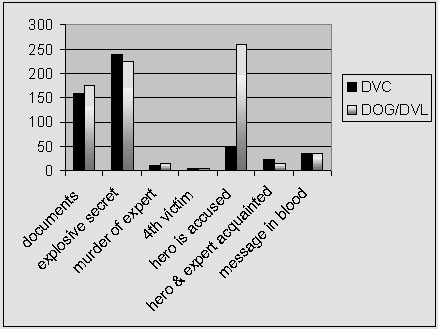Publishing Note:
The reader will be aware that the controversy to be addressed in this document is not only about Dan Brown's The Da Vinci Code (hereafter DVC) with respect to Lewis Perdue's Daughter of God (hereafter DoG), but also between Brown's book, DVC, and Perdue's two earlier books, The Linz Testament (hereafter Linz) and The Da Vinci Legacy (hereafter DVL).
The first of these, DVL, was published in 1983, followed by Linz in 1985, with DoG published in 2000. Essentially, each novel has built on its predecessor. In DVL Perdue began by exploring the topic of Leonardo da Vinci and religion in a thriller format, but later felt that to this theme should be added that of exploring the notion of 'the lost feminine' in modern day religions — having concluded that DVL had not succeeded in quite the way he wanted (though the book itself was very successful). So, in writing Linz, the second book of this genre, he kept some character types, almost began the narrative from scratch, and then expanded the religious history aspect which was what had begun to engage his interest at that time. Also, he was on the lookout for a different kind of heroine: in DVL the heroine is rescued by the hero, but by the time we get to Linz the heroine is the one doing the rescuing. This plot line goes a step further in DoG, because here the heroine rescues herself. There are many other refinements, to do with the characterisation overall, and the plot lines themselves. It is also true to say that in his researches— now spanning over 20 years — Perdue has accumulated a not inconsiderable knowledge of certain aspects of religion and art. Interestingly, as he would be the first to admit, he has also probably acquired some quite erroneous impressions and/or facts. Curiously, one of these errors (there may be others) was repeated by Brown in DVC, the kind of material error of fact that probably could have only one source, namely Perdue's books themselves. Moreover, as shall be seen later in this analysis, the error is quite central to the story, since it relates to a significant feature of the narrative of Perdue's books, and later Brown's.
Therefore, it is important to realize that — despite the existence of many points of striking similarity between the later and earlier books by Perdue — the later books are not mere reworkings of the earlier ones, but major developments, not only in terms of characterisation and plot but also in terms of the underlying infrastructure of facts and knowledge, although there are of necessity many points of striking similarity between the later and earlier books.
Aim of the present analysis
As outlined in the previous section, the claim is not just that Brown plagiarized from DoG, but also from DVL and Linz. That is the purpose of this analysis: to demonstrate substantial infringement by Daniel Brown of Lewis Perdue's three books DVL (Da Vinci Legacy), Linz (The Linz Testament) and DoG (Daughter of God). The reader will appreciate that of necessity it would be impossible in this document to catalogue each and every alleged plagiary. Rather, the intention is to give the reader a general introduction to the nature and extent of these infringements.
Overall structure of the two books: powerful evidence of similarity
Several plot lines run through Perdue's original Daughter of God/Da Vinci Legacy books, and many of these are strikingly similar or even identical in Brown's later Da Vinci Code. One set of examples concerns the way in which the hero becomes involved in the quest to locate the documents which contain secrets so dangerous and 'explosive' that members of various religious sects are prepared to kill to conceal them.
The documents, in each author's work, contain explosive secrets, and a quest to find them is launched when a renowned international expert is murdered by a member of a religious sect. Co-incidentally (?) in each book the expert is the 4th person within his area of expertise to be killed in this way (not the 2nd, 3rd or 5th, but in each case, the 4th). As it happens the hero and the expert in each author's work are actually acquainted with each other. The murdered expert in each author's work writes a last message in his own blood, and — finally — the hero, in each author's work, is accused of the murder of the expert. More details are shown in the graph below, where each bar relates to the page number in the respective book where the relevant detail is mentioned. As the reader will observe, there are seven plot features — which I believe to be representative of the striking similarities across the books in general — mentioned in the description above, and shown in the graph below — six of these seven plot features are in sequence and on very similar page numbers within the overall books.
